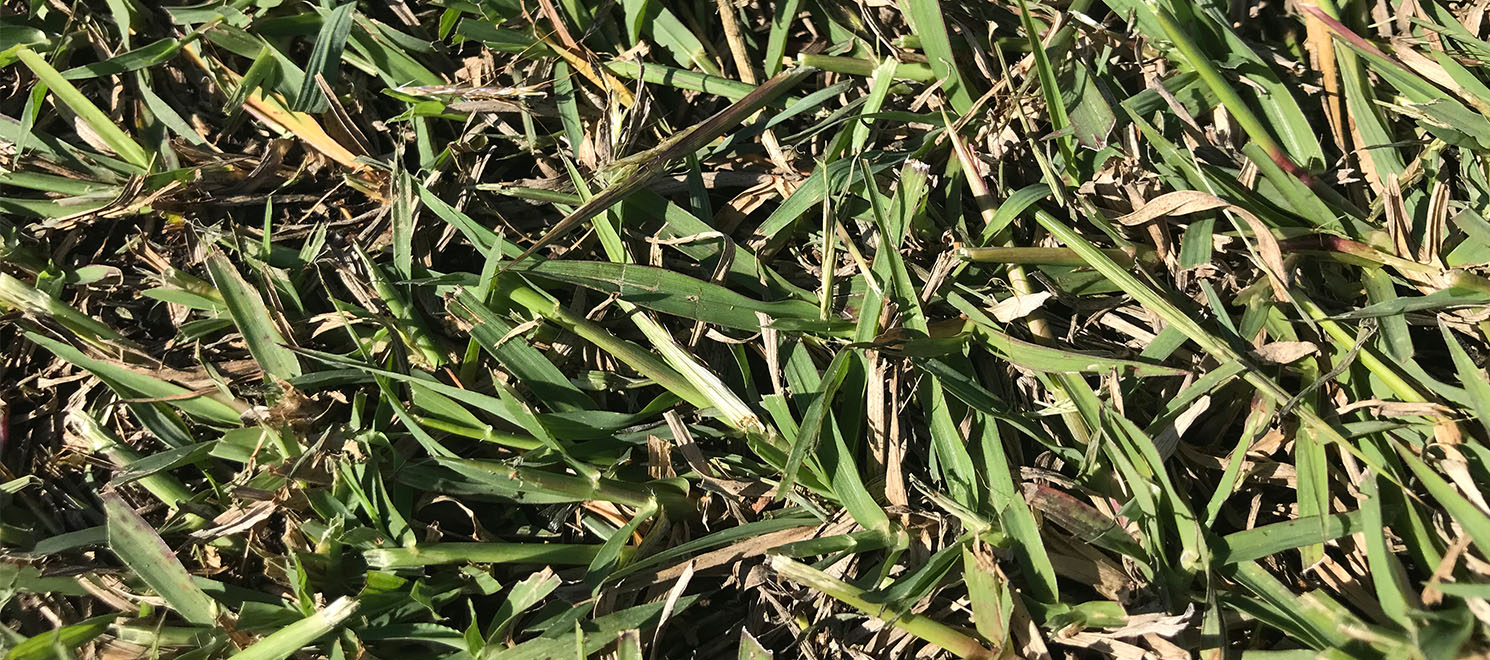
Bothriochloa pertusa
Indian bluegrass
Indian couch grass; 'Dawson' (formerly protected by Australian Plant Breeder's Rights).
Indian bluegrass (e.g. 'Dawson') is a low growing pasture grass that also produces a moderate quality dense turf sward when routinely mown. However, the species of grass is commonly referred to as a WEED due to its grwoth habit, in particular its fast grwoing tall inflorescence. Horizontal stems (stolons) are fine and red. Weakly tufted. Blue-green leaf blades are 1.5-8.5 cm long and 1.5-2.5 mm wide. Fine sparse hairs on the upper leaf surface, moderately dense hairs on the lower leaf surface. There are no hairs on the leaf edge (Source: Former Redlands DPI Technical Notes (DAF)). Within dry subtropical and tropical environments, the turf species is suited to commercial and residential lawns, sports fields, parks, site rehabilitation and land conservation, roadside verges and nature strips, orchard inter-rows and/or country air strips which meet the below requirements also.
Indian bluegrass grows best in a warm climate and has become naturalised in central and drier areas of northern Queensland. It is found growing in residental lawns, nature strips and seafront areas in the Northern Territory. It is a very drought hardy plant growing within an annual rainfall range of 500-900 mm. It is suited to well-drained loam and (heavy) clay soils, but will also grow better than most other grasses on difficult to manage, forest soils. Neutral to slightly alkaline soils preferred. The fine-medium textured Indian bluegrass variety 'Dawson' was by the then Department of Primary Industries, Queensland Government from 128 lines of B. pertusa in a Queensland-based multisite evaluation programme. Identified as a potential turf variety due to its low growth, rapid stolon development, dense ground cover and wide adaptation. In frost, the surface of Indian bluegrass is killed, but the grass will recover if the temperature stays above 6°C. Resistant to rust (Puccinia duthiae). Less prone to armyworm (Spodoptera sp.) and other moth larvae than blue couch (Digitaria didactyla). The variety is available in seed, but is often in short supply (Source: Former Redlands DPI Technical Notes (DAF)).
Pests, disease and weeds
Check to see which Pests, Diseases and or Weeds this turf variety may be susceptible to and how to successfully control them in your home lawn or sports turf.